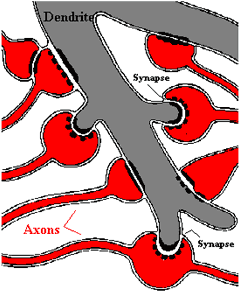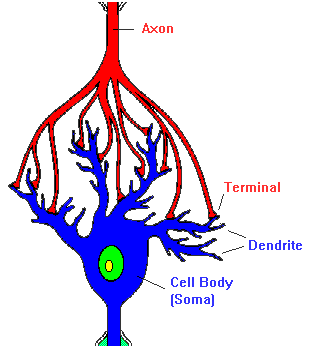Multiple Sclerosis
Multiple sclerosis basics
Multiple sclerosis treatment
Living well with multiple sclerosis
Patient Experience Articles
Health features
Related conditions
Related Medications
Health news
Support groups
Related health tools
Canada has highest rate of multiple sclerosis in the world: Study
Written by: Jonathan Sher, QMI Agency
Dec. 30, 2013
(Fotolia)
London, Ont. - It's a disease that strikes down adults at their prime - and it's found Ground Zero in Canada.
Multiple sclerosis afflicts Canadians at a rate that far outpaces anyplace else the world, a new survey has found.
"It's really shocking...It is almost like a Canadian disease," said Karen Lee of the Multiple Sclerosis Society of Canada.
Nearly 100,000 Canadians have the disease, a rate that's 28% higher than the country with the second-highest mark, Denmark, and nine times higher than the global average, according to the survey by the Multiple Sclerosis International Federation.
Ad
While Canadians are the most likely in the world to get the disease, they're waiting longer than most to get diagnosed, and no wonder - Canada lags behind most developed countries when it comes to the number of neurologists and MRI machines:
There's no doubt speedy diagnosis and treatment play a big role in how many patients fare, said Lee, a neuroscientist who tracks research so the society can choose how to allocate money it raises - $12 million in 2013.
"The earlier the treatment, the better the prognosis, generally," she said.
In people with MS, their immune system attacks the sheath that insulates the body's central nervous system, causing damage that can leave victims unable to walk and suffering from physical and cognitive deficits.
Most MS sufferers can be treated with a range of medications that suppress the immune system, but doctors often have to try several to find which one works best for a patient.
When doctors quickly diagnose the disease and find the best treatment, patients fare better, experts say.
Just why Canadians are so afflicted has been the subject of debate and research has uncovered several theories. Among them: Canadians live so far from the equator, the sun is too low in the sky much of the year to cause our skin to make vitamin D; we may have earlier exposure to viruses that might play a role in triggering MS; - Canadians may share a genetic predisposition to the disease, and those who smoke appear at higher risk.
"We don't have an answer," said Dr. Christine Wolford, a professor of epidemiology and biostatistics at McGill University. She studied the prevalence of MS in the Americas in a study published last year in the journal Neuroepidemiology.
The search for answers has become more challenging because many factors are at play, both genetic and environmental, she said.
The Multiple Sclerosis International Federation first published a survey of MS rates in 2008 and Canada topped the list. Since then, the rate here has jumped another 18%.
Canadians shouldn't put too much stock in those exact numbers, since both here and across the globe, no one has done an adequate job precisely tracking MS, Wolford said.
But there's no doubt Canadians are more afflicted than others.
"Canada keeps coming up on top," she said.
jonathan.sher@sunmedia.ca
THE MS TOP 10
(Disease prevalance per 100,000 population)
Canada: 291
Denmark: 227
Sweden: 189
Hungary: 176
Cyprus: 175
U.K.: 164
Czech Rep.: 160
Norway: 160
Germany: 149
Austria: 140
-- Source: Multiple Sclerosis International Federation, World Health Organization
ABOUT MS
-- Immune system attacks sheath around nerve cells in spine/brain.
-- Sufferers lose physical, cognitive function.
-- Canada has world's highest incidence, with about 100,000 afflicted.
-- Avg. age of onset in Canada: 31
-- Time from medical consult to diagnosis: 3rd-longest among 39 countries at 36 days.
View more news"
Canada has highest rate of multiple sclerosis in the world: Study - Multiple Sclerosis - C-Health: "Multiple Sclerosis Health Home >> Multiple Sclerosis >> Health news
Canada has highest rate of multiple sclerosis in the world: Study
Written by: Jonathan Sher, QMI Agency Dec. 30, 2013
 |
(Fotolia)
|
London, Ont. - It's a disease that strikes down adults at their prime - and it's found Ground Zero in Canada.
Multiple sclerosis afflicts Canadians at a rate that far outpaces anyplace else the world, a new survey has found.
"It's really shocking...It is almost like a Canadian disease," said Karen Lee of the Multiple Sclerosis Society of Canada.
Nearly 100,000 Canadians have the disease, a rate that's 28% higher than the country with the second-highest mark, Denmark, and nine times higher than the global average, according to the survey by the Multiple Sclerosis International Federation.
While Canadians are the most likely in the world to get the disease, they're waiting longer than most to get diagnosed, and no wonder - Canada lags behind most developed countries when it comes to the number of neurologists and MRI machines:
There's no doubt speedy diagnosis and treatment play a big role in how many patients fare, said Lee, a neuroscientist who tracks research so the society can choose how to allocate money it raises - $12 million in 2013.
"The earlier the treatment, the better the prognosis, generally," she said.
In people with MS, their immune system attacks the sheath that insulates the body's central nervous system, causing damage that can leave victims unable to walk and suffering from physical and cognitive deficits.
Most MS sufferers can be treated with a range of medications that suppress the immune system, but doctors often have to try several to find which one works best for a patient.
When doctors quickly diagnose the disease and find the best treatment, patients fare better, experts say.
Just why Canadians are so afflicted has been the subject of debate and research has uncovered several theories. Among them: Canadians live so far from the equator, the sun is too low in the sky much of the year to cause our skin to make vitamin D; we may have earlier exposure to viruses that might play a role in triggering MS; - Canadians may share a genetic predisposition to the disease, and those who smoke appear at higher risk.
"We don't have an answer," said Dr. Christine Wolford, a professor of epidemiology and biostatistics at McGill University. She studied the prevalence of MS in the Americas in a study published last year in the journal Neuroepidemiology.
The search for answers has become more challenging because many factors are at play, both genetic and environmental, she said.
The Multiple Sclerosis International Federation first published a survey of MS rates in 2008 and Canada topped the list. Since then, the rate here has jumped another 18%.
Canadians shouldn't put too much stock in those exact numbers, since both here and across the globe, no one has done an adequate job precisely tracking MS, Wolford said.
But there's no doubt Canadians are more afflicted than others.
"Canada keeps coming up on top," she said.
jonathan.sher@sunmedia.ca
THE MS TOP 10
(Disease prevalance per 100,000 population)
Canada: 291
Denmark: 227
Sweden: 189
Hungary: 176
Cyprus: 175
U.K.: 164
Czech Rep.: 160
Norway: 160
Germany: 149
Austria: 140
-- Source: Multiple Sclerosis International Federation, World Health Organization
ABOUT MS
-- Immune system attacks sheath around nerve cells in spine/brain.
-- Sufferers lose physical, cognitive function.
-- Canada has world's highest incidence, with about 100,000 afflicted.
-- Avg. age of onset in Canada: 31
-- Time from medical consult to diagnosis: 3rd-longest among 39 countries at 36 days.
'via Blog this'

 Hear IT!:
Hear IT!: 



 Happy 116th Birthday to the word "SYNAPSE."
Happy 116th Birthday to the word "SYNAPSE." "You are your synapses. They are who you are."
"You are your synapses. They are who you are."





